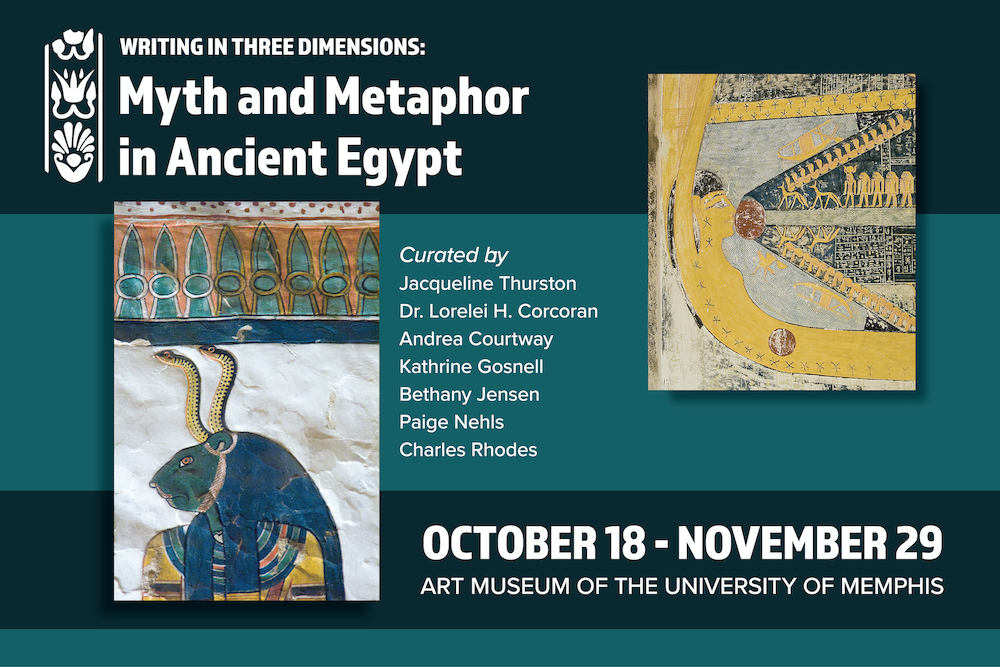Writing in Three Dimensions: Myth and Metaphor in Ancient Egypt

Writing, as a means to express and communicate ideas, is also a process that preserves our thoughts in a permanent medium. The Ancient Egyptians employed an object-based hieroglyphic script to translate their thoughts and beliefs about life and the universe. Those concepts were also concretized in the paintings, relief carvings, sculpture, and architecture that reproduced for them in microcosm the macrocosm of the universe as they understood it.
The visually stunning images by and philosophical musings of photographer, philosopher, and poet, Jacqueline Thurston, captured in her book, Sacred Deities of Ancient Egypt, serves as a source of inspiration for this exhibit, "Writing in Three Dimensions." The exhibit explores the ways in which the ancient Egyptian approach to solving the meaning of life involved a complex framework of balance and counterbalance. An emphasis on duality in their language, art, and thought and their acceptance of multiple answers to the complex questions of how the world works helped them to maintain its perpetual equilibrium through the mechanisms of myth and magic.
Color photographs hand-selected by and on loan from the artist, Jacqueline Thurston, are complemented by antiquities in the collection of the Art Museum of the University of Memphis, chosen by Dr. Lorelei H. Corcoran, director of the university's Institute of Egyptian Art & Archaeology, a University of Memphis Center of Excellence. As they relate to the exhibit's theme, these objects will be shown to transcend the material world and illustrate their position in the metaphysical construct of reality created in the imagination of the ancient Egyptian mind.
3-D printed replicas of a limited number of the authentic ancient objects, produced with the help of Casey Parkman of the sandbox technology center in the University of Memphis McWherter Library and based on 3D digital models created by Dr. Joshua Roberson, assistant director of the IEAA, will be available to provide a tactile experience. Videos created by graduate students in Dr. Corcoran's spring 2020 and fall 2020 art history classes will provide a visual and audio component to the show. Graduate students in Dr. Corcoran's fall 2021 art history seminar have also contributed to the curatorial and textual content of this exhibit.
-- Sent from my Linux system.
No comments:
Post a Comment